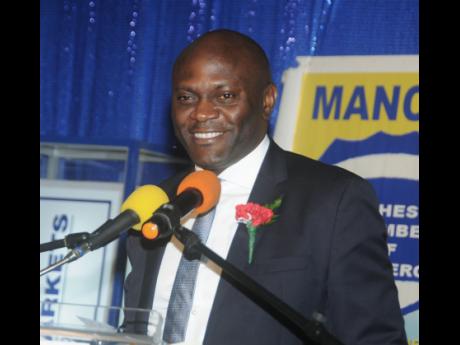Constant Lonkeng Ngouana | Investing in Jamaica’s future
Jamaica has embarked, for four years now, on an economic reform programme to put its public finances on a stronger footing.
At the same time, the country has set in train structural measures to achieve higher and sustained economic growth, more employment, lower poverty, and improved living standards for Jamaicans.
Amending the legacy of past fiscal profligacy is a journey of discipline and fortitude demanding sacrifices from all segments of society in order to secure a better future. Reducing Jamaica's debt today lays the foundation for a bright future.
Restraint today ...
Jamaica's public debt stands at nearly 120 per cent of gross domestic product (GDP) today, and 25 cents of each revenue dollar go to service that debt. Another 42 cents go to public sector wages and pensions. At the end, only 33 cents are left for infrastructure spending, social capital, and upgrading of public goods.
The ongoing fiscal discipline now the driving mantra across two governments aims to reduce the public debt to 60 per cent of GDP by FY2025/26, as enshrined in Jamaica's Fiscal Responsibility Law (FRL).
The only viable option under current circumstances is to maintain a seven per cent of GDP primary surplus. This limited resource envelope puts an extra premium on spending composition and efficiency.
The reforms are bearing some fruit. Macroeconomic stability is entrenched and the economy has expanded for eight consecutive quarters (last seen about a decade ago) even if only modestly. Unemployment has reduced (albeit still high), people are returning to the labour force, consumer and business confidence are near historic highs, and public debt has reduced by 25 per cent of GDP since 2013.
... for a better future
The current account deficit now hovers around three per cent of GDP, down from double digit a few years ago, which has supported the accumulation of foreign reserves.
Lower debt means a more dynamic and prosperous Jamaica, with the private sector as the engine of growth. Lower debt means more options for the government to spend on Jamaica's future in areas like education, health, infrastructure, and security.
Lower debt also means that more can be allocated to protect the poor and the vulnerable, and build a strong and sustainable social safety net where no Jamaican is left behind.
As part of this trajectory, the government is also tackling the challenge of transforming the public sector. The end goal is a public sector with a size that is right for the country, with efficient service delivery and less government bureaucracy. Such a public sector would give room for the private sector to grow, stimulate investment, and create jobs.
Support to stay the course
The ownership of the reform programme, as reflected in the partnership between the government and the Jamaican people, has been instrumental in the success of the economic reform program.
Sustained policy efforts and continued steadfast support from the people of Jamaica are essential to fully realise the growth and employment dividends. Protecting and advancing this progress promises a bright future for Jamaica.
- Constant Lonkeng Ngouana is IMF Resident Representative for Jamaica. Feedback: editorial@gmail.com


